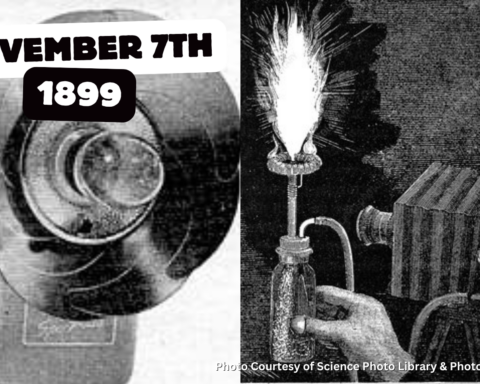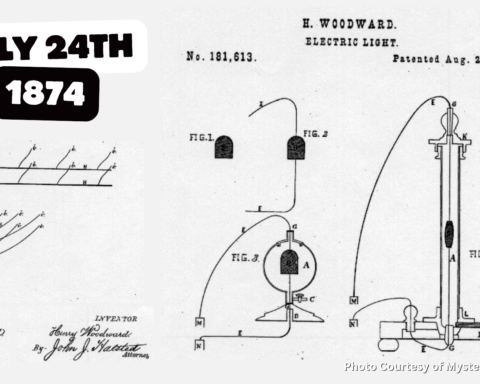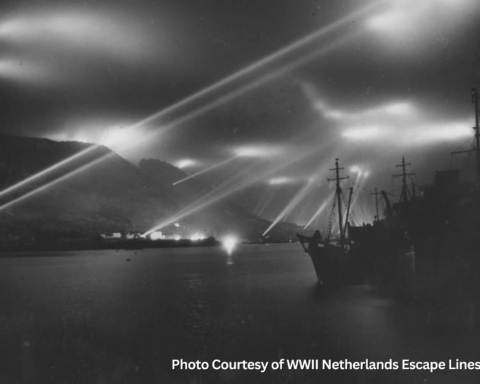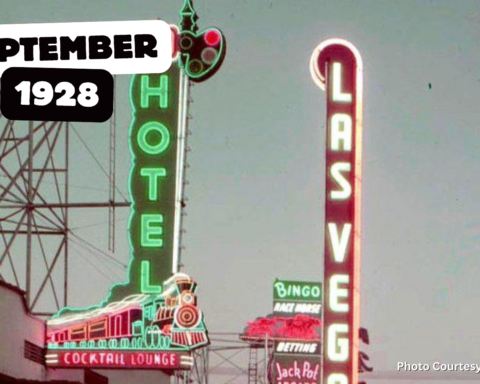The Statue of Liberty, a symbol of freedom and democracy, has stood proudly on Liberty Island (formerly know as Bedloe’s Island) since its dedication on October 28, 1886. Gifted by France to the United States, this colossal statue represents hope and opportunity for millions of immigrants who have arrived on American shores. However, one aspect of this iconic monument that often goes unnoticed is the intricate lighting that enhances its grandeur, especially at night… but it wasn’t always that way.
Everyone is familiar with the Statue of Liberty as a symbol of the promise of America, but few are probably aware that, early in its existence, it was also officially a lighthouse operated under the authority of the Lighthouse Board.
The lighted torch in Lady Liberty’s right hand has great symbolic significance, but at its beginning, it was also used as a navigational aid for ships entering New York Harbor.
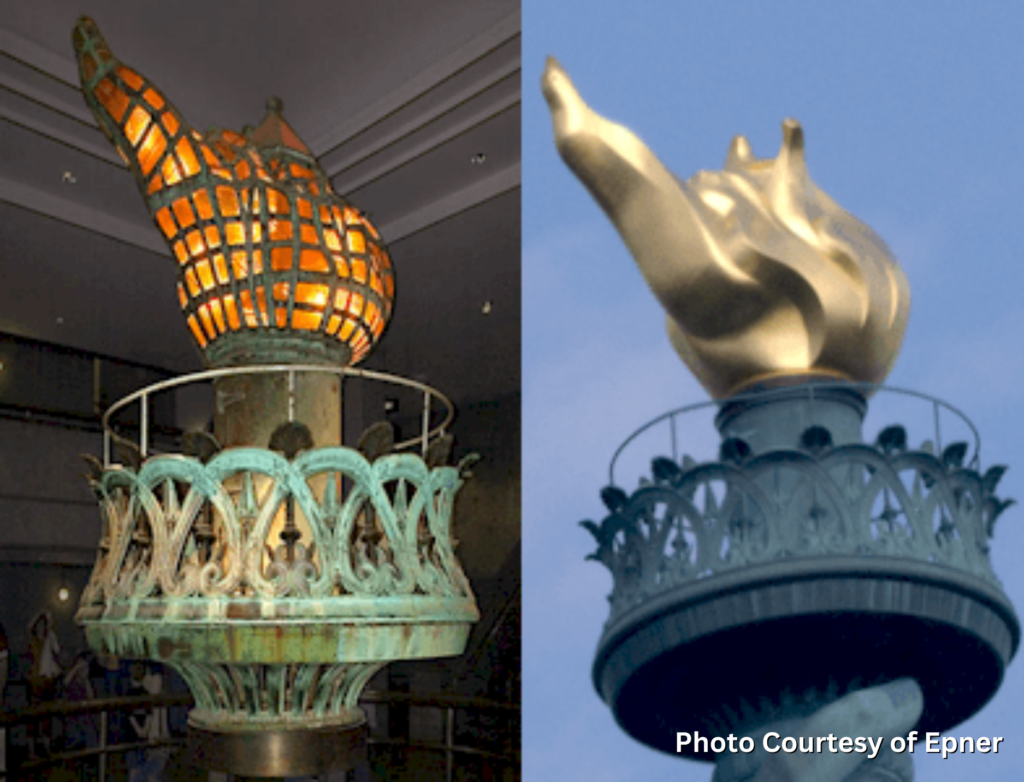
It remains unclear whether Frederic Bartholdi, the statue’s French-born designer, had ever outlined any specific plan for how the statue would be illuminated. Electric lights, then a fairly new invention, were the popular choice. The chief engineer for the lighting project advocated for placing electric arc lights around the statue’s feet and corners, aiming them upwards to flood the statue with light at night – an innovative concept at the time. He also proposed lights in the torch shining straight up into the clouds and around the entire horizon through two rows of circular windows made in the copper flame.
The first time the statue’s lights were turned on, their angle was miscalculated, and instead of majestically bathing the statue in light, they cast a shadow that left the statue’s head and shoulders in the dark.
After weeks of miscues and realignments, while the statue remained unseen at night, they finally arrived at a solution. The installation included 15 arc lamps and 14 incandescent lamps installed by the American Electric Manufacturing Company. It was widely praised for its simplicity and innovation and may have never happened without the generosity of the American company. They donated everything because Congress had failed to approve any funding for the project.
Since there was no funding, the statue was only going to be illuminated for 1 week. So, when the one week was up, frantic government officials scrambled to get more funding to keep the lights on and maintain the system. However, on November 7, 1886, the statue went dark for two weeks. The World newspaper reported, “The torch of the Goddess of Liberty is suffering from an attack of red tape.” The Lighthouse Board worked behind the scenes to secure emergency funding, and President Cleveland finally gave the executive order that authorized the Board to continue the lighting. The Statue of Liberty became operational as a lighthouse on November 22, 1886.
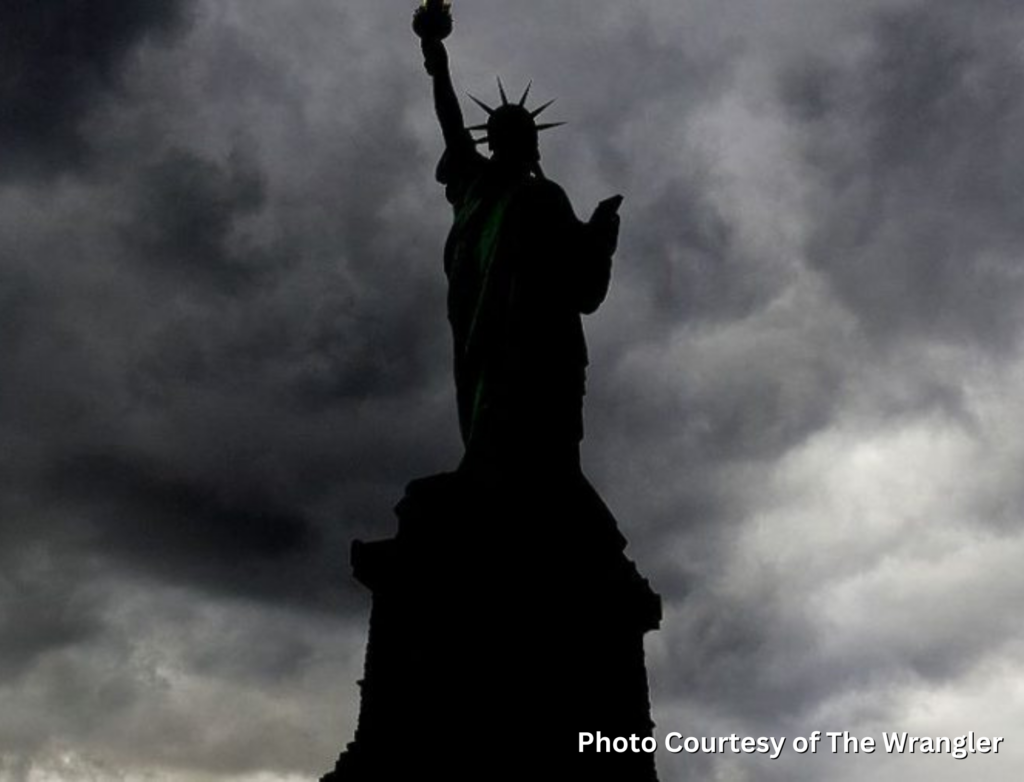
It was said that the arc lamps in the torch could be seen from 24 miles away at sea and was a beacon of hope for immigrants arriving in New York Harbor.
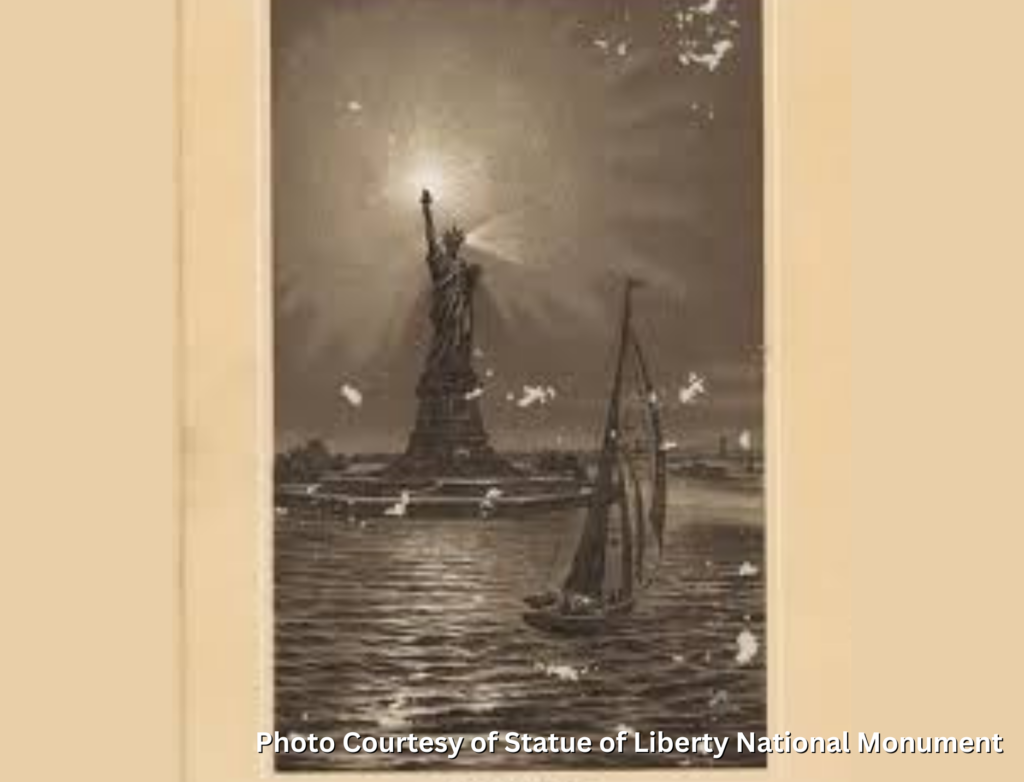
In late 1901, after 15 years of being in the harsh elements, the statue and the island were in disrepair and no longer needed as a navigation marker. On March 1, 1902, the Statue of Liberty was discontinued as an aid to navigation. The War Department asked that the Lighthouse Board release its jurisdiction over the statue, which it gladly did. The War Department kept authority over the statue until 1932 when it was released to the National Park Service who still manages it today and is one of their prized jewels.
As technology advanced, so did the methods used to illuminate the Statue of Liberty. In 1924, the statue underwent a significant restoration, which included the installation of new lighting systems. The goal was to create a more dramatic effect, showcasing the statue’s features and making it visible from greater distances.
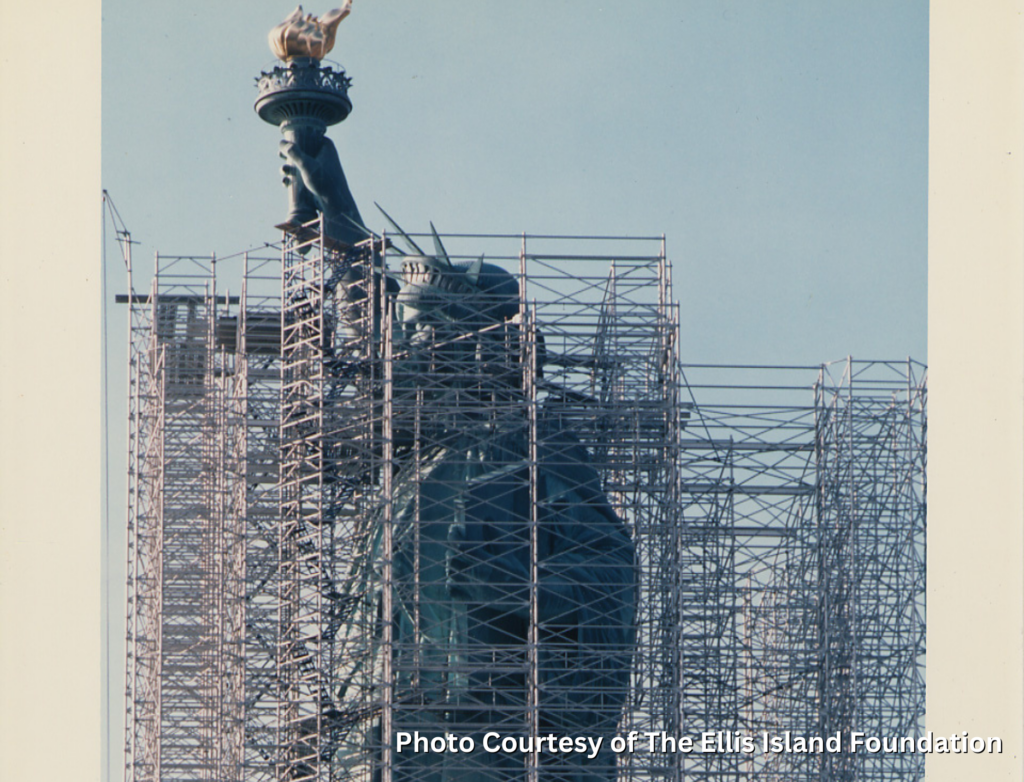
The Statue of Liberty’s lighting has evolved over time, including incandescent floodlights, mercury vapor lamps, and LED lighting. In 1986, during the statue’s centennial celebration, a new lighting system was installed that utilized high-intensity discharge lamps. This upgrade not only improved visibility but also highlighted the statue’s copper skin, allowing it to shine brilliantly against the night sky.
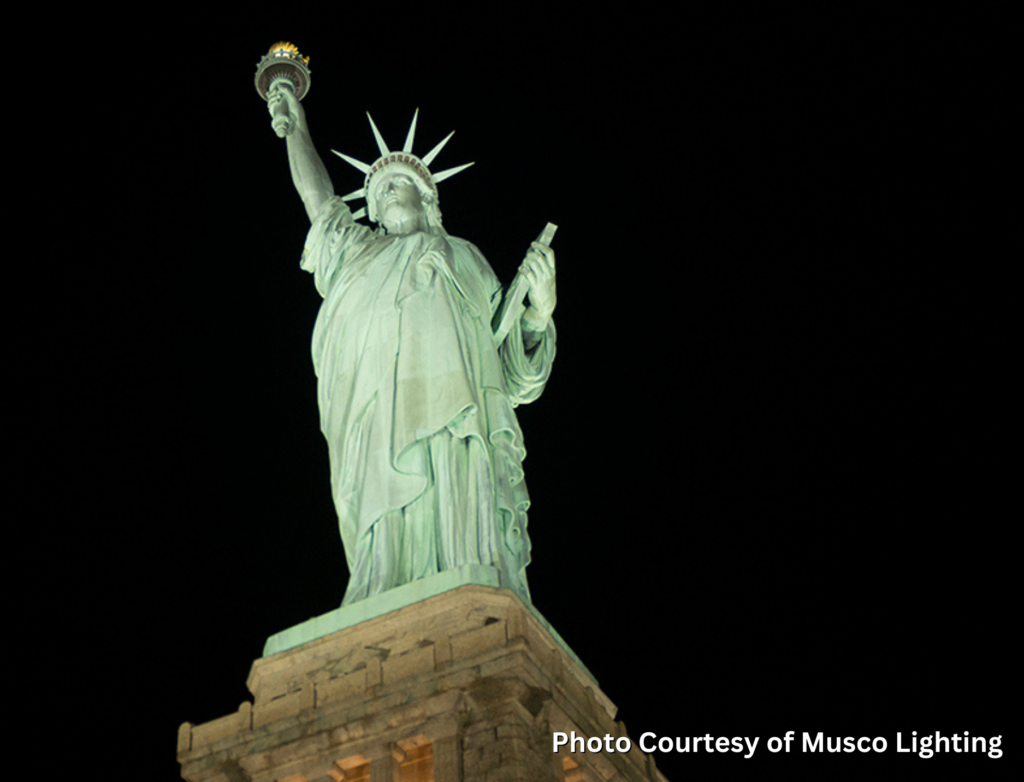
In later years, Musco Lighting developed a custom-designed LED lighting solution for the Statue of Liberty. The lighting system uses precise optics to highlight all the aesthetic details of the monument while reducing the amount of stray light projected into the night sky. The new LED system provides twice the brightness level while reducing energy consumption by 62 percent when compared to the prior metal halide lights.
The lighting of the Statue of Liberty is more than just a technical achievement; it is a symbol of resilience and hope. The statue has weathered storms, changes in society, and even acts of terrorism, yet it continues to stand tall, illuminated for all to see. The lights that shine upon Lady Liberty serve as a reminder of the values she represents—freedom, democracy, and the pursuit of happiness.
Next time you find yourself in New York Harbor, take a moment to appreciate the beauty of the Statue of Liberty as it shines brightly against the night sky. It is not just a statue; it is a testament to the ideals that unite us all, illuminated for generations to come.
Featured image courtesy of The Gothamist.

